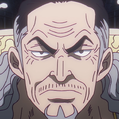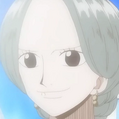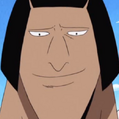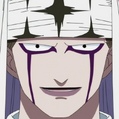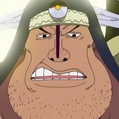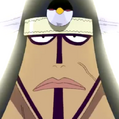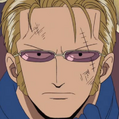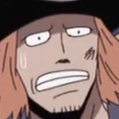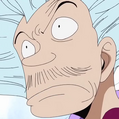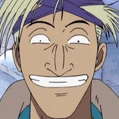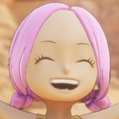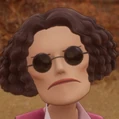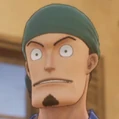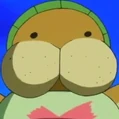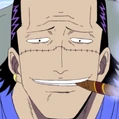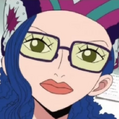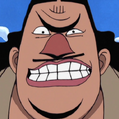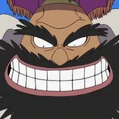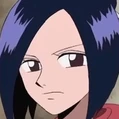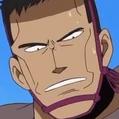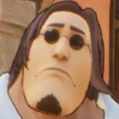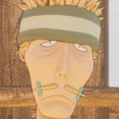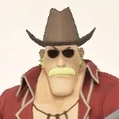- The subject of this article has also been referred to as Alabasta.
The Arabasta Kingdom is a desert kingdom in Paradise. It was the fourth place that the Straw Hat Pirates visited on the Grand Line, and the events here resulted in Luffy's bounty being raised to ![]() 100,000,000, and Zoro acquiring a bounty of
100,000,000, and Zoro acquiring a bounty of ![]() 60,000,000.
60,000,000.
It is where the poneglyph showing the location of Pluton is located,[3] and one of the twenty founding countries of the World Government.[4] It is ruled by the Nefertari Family, who, unlike the other families of the First Twenty, did not leave their home country to live in Mary Geoise.
General Information
Arabasta is an established kingdom with a long history. It is located on Sandy Island (サンディ
Kingdom Information
- Kingdom Name: Arabasta
- Current Ruler: Princess Nefertari Vivi
- Former Rulers: Queen Nefertari Lili, Queen Nefertari Titi, King Nefertari Cobra (all deceased)
- Important People: Chaka (Head Guard), Pell (Head Guard), Igaram (Royal Guard Captain), Koza (Former Rebel Army Leader, Minister of Environment)
- Current Affiliations: World Government, Straw Hat Pirates
- Poneglyph: Yes (Tomb of the Kings)
- Population: Over 10 million[5]
Architecture
Arabasta's architecture is very similar to Egyptian, Ancient Egyptian, Las Vegas, Middle Eastern and Moorish buildings. However, the styles vary between cities.
Alubarna
The capital city of Arabasta has white, simple buildings. The palace is grand and resembles the architecture of Enies Lobby, except more colorful.
The city plan of Alubarna is round and similar to the old design plans of Iraq during the era of the Abbasid caliphate. Due to the Middle Eastern influences on Arabasta, it is possible that the city of Alubarna is designed based on Baghdad.
Yuba
The architecture of Yuba is generally circular buildings. All the tops of the buildings have thin logs. After the arrest of Crocodile, many people went to Yuba and tried to rebuild it.
Rainbase and Nanohana
Both Rainbase and Nanohana have similar architecture, with Rainbase's resembling a classic nineteenth century American town, with white walls, similar to those in Alubarna. Nanohana is extremely similar, but the designs seems closer to Alubarna's, with taller buildings.
Landmarks and Cities
Cities
Cities are central gathering places for the citizens of Arabasta. Arabasta is a very old country; there are few oases, but where they exist a town is likely built around it. Some older cities are now in ruins, while new ones also exist. The Sandora Desert is extremely desolate, and is usually only entered for travel. The cities are further divided by the Sandora River, which splits the country in half.
There are 7 known cities in Arabasta (8 if non-canon is included). Two of them are port towns situated on the south and east sides of the island.
Alubarna
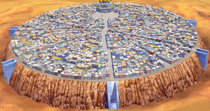
Alubarna is the capital city of Arabasta, and is rich in culture. It is an extremely large city, on a huge rock. Stairs are carved and paved for entrance to the city. It is extremely circular, and features both a clock tower and the Arabasta Royal Palace. Just outside the city exist the Royal Tomb, a forested area where Zoro got lost in, and the Tomb of the Kings.
The Alubarna Clock tower is an extremely tall building, resembling Big Ben in England. There is a large open area at the very top of the tower. The top of the clock tower can only be accessed from the stairs on the bottom floor, and going up the stairs for the building it rests upon will get you nowhere. At the time, Crocodile planned to launch a bomb from there, due to the large open space and the close proximity to the Central City Square. This is a large, circular area where people can meet. It resides just outside of the Arabasta Royal Palace. The first and final confrontation between the Rebel Army and the Arabasta Royal Army took place here, at the climax of the Arabasta Arc.
Nanohana
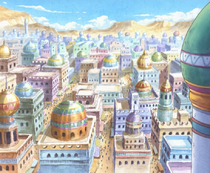
Nanohana is a port-town in south-east Arabasta. It is the central port city, and handles the most import and exports in all of Arabasta that goes to outside.[6] It is famous for its perfume, which is very pungent to those that aren't used to it. Nanohana is the "Little Flower" of Arabasta. Nano is an English word for "very tiny", and hana is the Japanese word for "flower". This possibly hints the city may have many cultures within it.
Yuba
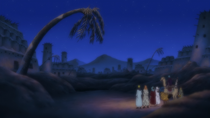
Yuba is a small town, only about 8–10 years old. It was started by Toto and his son, Koza. It has a very unique, dirt like style of architecture. This town was abandoned (except by Toto) after many sandstorms came. The Rebel Army relocated after this to Katorea. After the events of the defeated Crocodile, most people went to Yuba to try rebuilding it.
Erumalu
Erumalu is an ancient city. It was known as the Green City, but is now all ruins. The city itself resides in a region that lacks large amounts of rain.
Rainbase
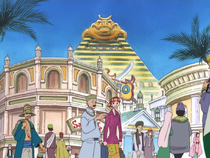
Rainbase is one of the few thriving towns left. The casino, Rain Dinners is here, and under it is Crocodile's base. A pyramid-shaped building, it seems like a normal casino, and acts as one. Behind the scenes, Crocodile was secretly scheming against the King.
Katorea
Katorea is a city only seen very briefly. It is just north-east of Nanohana, a short ride away. The only view shown is in a filler scene where Chopper accidentally falls asleep in the back of a caravan and travels there, where he meets Matsuge the camel. While Nanohana is the city that is famous for its perfume, Katorea is where said perfume is made.
Tamarisk
Tamarisk is a city located in Arabasta. This is where Hina arrived in Arabasta.
Suiren
Suiren is a dried-up city located in Arabasta. This is Erik's hometown.
The following events are Non-Canon and therefore not considered part of the Canon story.
Ido
Ido is a city that was visited by a group of con men led by Camus who came there to take advantage of the town and get free food while posing as Rebel Army men.
Concludes non-canon section.
Landmarks
Landmarks are memorable places around Arabasta.
Sandora Desert
The Sandora Desert is a large desert that makes up the majority of the land of Arabasta that is not inhabited near oases.
Sandora River
The Sandora River is a large river the runs through Arabasta, right down the center. The length across is about 50 kilometers.[7]
Tomb of the Kings

The Tomb of the Kings is the royal tomb where the members of the royal family are buried. It is just outside of Alubarna, located underground beneath ordinary tombs, and accessed through a secret staircase. It was destroyed by Nefertari Cobra in an attempt to kill Crocodile.
Ukkari Hot Spring Island Tunnel
This tunnel consists of an underground passage that directly connects Arabasta to the Ukkari Hot-Spring Island.[8] It was accidentally dug up by the Dirt Boss, under the orders of Goro and Gedatsu, and then converted into a bus system for the transportation of customers headed by Hasami.[9]
Symbol

The symbol of Arabasta Kingdom is a sun consisting of a circle with 8 curved drop shapes around it. It was first revealed in Chapter 130. When Vivi reads about the war in Arabasta the newspaper, a flashback of the kingdom's flag being burned is shown. The flag bears the sun sign. The shield of an Arabasta soldier in Chapter 182 also shows this symbol.
It is also seen on the sleeves of Sanji's overcoat and on Igaram's fan when he disguises as Vivi (the latter only has 5 shapes around the circle, though). Further, a Den Den Mushi seen in Chapter 216 shows a 6 shapes' symbol.
Citizens
Royal Guards and Palace Staff | ||||
|---|---|---|---|---|
Citizens | ||||
Citizens (Non-Canon) | ||||
Baroque Works | ||||
Other Pirates | ||||
Fauna | ||||
History
Past
Arabasta has a long, and illustrious history. According to Nico Robin, the country has existed for 500 years before the Void Century, perhaps even longer. The Royal Palace of Alubarna predates the kingdom itself, having existed for around 4000 years.[10]
800 years ago, the Nefertari royal family was one of the twenty royal families who founded the World Government. Notably, they are the only family to remain in rule of their own country, rather than moving to Mary Geoise and letting new royalty take over.[4]
The Poneglyph, initially interpreted by Nico Robin, seemed to describe Arabasta's early history.[11]
Robin, as Miss All-Sunday, recited a few events, until Crocodile interrupted her, not interested in the history of the country:
- Kahira (カヒラ, Kahira?) conquers Arabasta (Arabasta's history, date: Year of Heaven 239. Information supplied by Nico Robin)[11]
- The Bitein Dynasty of Taymar (テイマーのビテイン朝, Teimā no Bitein Asa?) begins its rule (Arabasta's history, date: Year 260. Information supplied by Nico Robin)[11]
- Great Taph Temple (タフ大聖堂, Tafu Taiseidō?) completed in Erumalu (Arabasta's history, date: Year 306. Information supplied by Nico Robin)[11]
- The Hero of Oltea (オルテアの英雄, Orutea no Eiyū?), Mamudin (マムディン, Mamudin?)... (Arabasta's history, date: Year 325. Information supplied by Nico Robin, however she was not allowed to finish the sentence.)[11]
However, it was later revealed that it contained only the whereabouts of Pluton, not the historical account.[12]
Arabasta Saga
Arabasta Arc
Crocodile, then Warlord of the Sea, attempted to incite civil war in Arabasta and conquer the country. Luffy defeated him after three battles.
Whole Cake Island Saga
Zou Arc
The Royal Family board a ship to set sail for the Levely.[13]
Wano Country Saga
Wano Country Arc
After the Levely, a huge incident involving Arabasta occurred, and the Marines were working on resolving the situation. This is eventually revealed to be the apparent assassination of Cobra by Sabo and the disappearance of Vivi.[14]
Translation and Dub Issues
There remains some debate over whether the kingdom should properly be romanized Arabasta or Alabasta, as katakana tends to be infamously fickle between R and L pronunciations:
- Alabasta was the manga's earliest romanization, used in the Whisky Peak[1] and Little Garden Arcs (and, much later, the Cover Page of Chapter 611). It is universally used by the 4Kids, VIZ, and Funimation translations.
- Arabasta came into use with the manga's supplementary maps in Volume 19 and 20, and was favored by many fan translators. Later, the Whole Cake Island Saga depicted it[15] on the sails of Vivi's Levely ship, and it is currently regarded as the canonical spelling.
- Note that all of these were edited to read Alabasta in Viz's translation.
- Alabaster was, uniquely, used in the Funimation localization of One Piece: Unlimited Adventure.
 |
 |
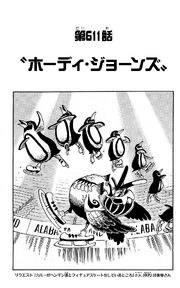 |
Inspirations and Influences
According to Eiichiro Oda, Arabasta was inspired by ancient Egypt.[16] The Egyptian influence is evident in building and clothing designs, the hieroglyphs, the names of the royal family, the retainers, and food mentioned (knafeh, mulukhiyah). Atop its buildings (particularly in Alubarna) are dome structures all reminiscent of architecture for ancient churches and mosques in Egypt.
The official book Rurubu One Piece also draws several comparisons between Arabasta and India; in particular, numerous similarities are noted between Alubarna and Jodhpur. The Indian influence is most evident in the many "onion" domes atop its buildings (particularly in Alubarna), a staple of Indian—particularly Mughal—architecture such as the famed Taj Mahal.
Rurubu also connects Rain Dinners with Luxor Las Vegas (an Egyptian-inspired casino), as well as Yuba with the Great Mosque of Djenné in Mali.
Trivia
- Arabasta's name may come from the Arabian Penninsula, which as a region has been known as "Arabia" for many centuries.
- The name may also come from alabaster, a mineral commonly found in ancient Egyptian artifacts.
- According to Crocodile, the prevailing winds of Arabasta always blow from north to south, which was why all his sandstorms continually hit Yuba.
References
- ↑ 1.0 1.1 One Piece Manga and Anime — Vol. 13 Chapter 113 (p. 15) and Episode 78, Arabasta is mentioned by Igaram.
- ↑ One Piece Manga and Anime — Vol. 18 Chapter 162 (p. 2-3) and Episode 97, The climate on Sandy Island is shown to match that of a summer island.
- ↑ One Piece Manga and Anime — Vol. 24 Chapter 218 (p. 3) and Episode 130, Nefertari Cobra states what the poneglyph in the crypt shows.
- ↑ 4.0 4.1 One Piece Manga and Anime — Vol. 73 Chapter 722 (p. 19) and Episode 653, Donquixote Doflamingo mentions the Nefertari Family among the twenty founding kings.
- ↑ SBS One Piece Manga — Vol. 24 (p. 106), Arabasta's population.
- ↑ One Piece Manga and Anime — Vol. 17 Chapter 155 (p. 2) and Episode 92, Nanohana is first seen.
- ↑ One Piece Manga — Vol. 20 Chapter 180 (p. 14).
- ↑ One Piece Manga — Vol. 36 Chapter 341, cover story: Gedatsu's Accidental Blue-Sea Life Vol. 25.
- ↑ One Piece Manga — Vol. 36 Chapter 342, cover story: Gedatsu's Accidental Blue-Sea Life Vol. 26.
- ↑ One Piece Manga and Anime — Vol. 21 Chapter 188 (p. 2) and Episode 115, A Royal soldier states that Alubarna Palace was built 4,000 years ago.
- ↑ 11.0 11.1 11.2 11.3 11.4 One Piece Manga and Anime — Vol. 22 Chapter 203 (p. 5) and Episode 123, Nico Robin speaks on the true history of Arabasta. Note: This information may be false due to the circumstances at the time of Robin retelling it.
- ↑ One Piece Manga and Anime — Vol. 24 Chapter 218 (p. 3) and Episode 130, The Arabasta's Poneglyph was later revealed that it contained only the whereabouts of Pluton.
- ↑ One Piece Manga and Anime — Vol. 82 Chapter 822 (p. 17) and Episode 776.
- ↑ One Piece Manga and Anime — Vol. 104 Chapter 1054 (p. 16) and Episode 1081.
- ↑ One Piece Manga and Anime — Vol. 82 Chapter 823 and Episode 777.
- ↑ SBS One Piece Manga — Vol. 17 (p. 66).


